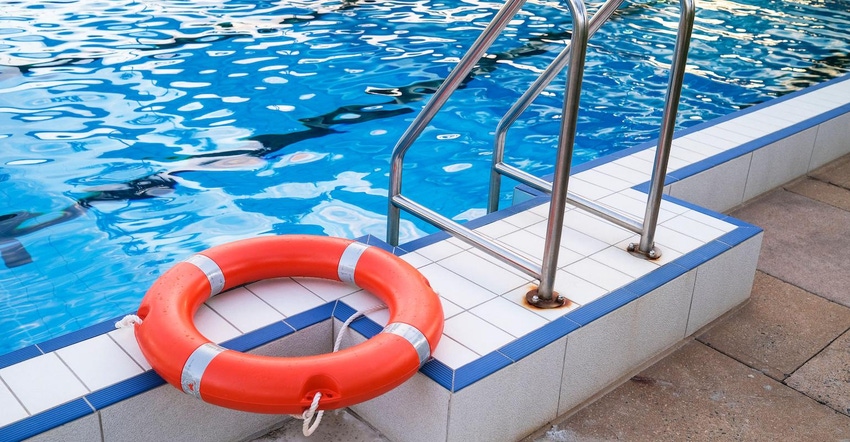4 Surprising Ways to Make Pools and Spas Safer
The basic layers of protection safety groups recommend are vital. But here are pro tips on additional drowning prevention and water safety steps that are often forgotten—and could save lives.
November 21, 2022

One of the best parts of being in the swimming pool and spa industry is knowing that you’re selling fun and family togetherness—an investment that will create lasting memories and ongoing bonding.
But there’s a tragic side to pool and spa ownership that pros need to address: the risk of drowning. In fact, drowning is the leading cause of unintentional injury related death for children ages 1-4. Drowning remains in the top five causes of unintentional injury related death from birth to 54 years old, according to the National Drowning Prevention Alliance.
“Drowning prevention should be top of mind for everyone in the pool and hot tub industry. We have a commitment to not just manufacture, build or service pools and hot tubs, but to educate the public on using them safely. We can all play a role in preventing drownings and saving lives,” said Sabeena Hickman, who is both CEO of PHTA and a board member of NDPA.
NDPA offers numerous resources to help pros educate homeowners including handouts and brochures as does PHTA, which works closely with NDPA.
While many pros are aware of the risks and doing their best to educate consumers, the recent surge in demand has created a new market of uneducated pool and spa owners. That’s because many new additions have been built by upstarts that don’t have a pool and spa background, said Dan Lenz, vice president of All Seasons Pools, Spas and Outdoor Living, who’s been in the industry more than three decades.
“There are a lot of people out there who don’t know what they don’t know,” he said. “And that’s a big problem because they’re putting people in harm’s way.”
NDPA and other groups say that preventing drowning comes down to these five keys:
Barriers and alarms.
Water competency.
Life jackets.
Supervision.
Layers of protection.
Those basics are great, said Lenz, but he added pool and spa pros can help homeowners even more with these additional drowning prevention and water safety steps:
1. Bonding. Make sure the deck is electrically bonded to the pool. Too often, pool builders leave decks up to homeowners. Lenz said that leads to decks that aren’t electrically bonded to the pool, which can cause electrocution.
“Too often our industry puts the homeowner in charge of being the general contractor,” he said. “They don’t have any idea that there’s potential for people getting electrocuted if the deck isn’t bonded properly.”
For elements that are subcontracted and relate to safety, such as fencing, Lenz makes sure to provide homeowners with information about the necessary safety measures. “A lot of pool builders don’t do that part of things,” he said. “We need to make sure we as pool professionals are educating homeowners about safety.”
2. Diving boards. Before adding a diving board, ensure the pool is properly designed for it. Lenz said he’s seen this mistake especially with fiberglass pools. But any pool that isn’t built with a proper diving well is a potentially life-threatening and debilitating hazard waiting to happen.
“I see pools with just 6 feet of water that should never have a diving board on them,” Lenz said.
PHTA provides the building standards for pools with diving boards and manufacturers also provide clear instructions for the proper placement of boards including which types of pools they are appropriate for.
3. Properly sized circulation systems. With pumps and filters and other elements of circulation systems difficult to find, Lenz said some builders are installing circulation systems that aren’t properly sized for the pool. Not only do improperly sized systems waste energy, but they also lead to poor water quality. Worse, such systems can create suction entrapment hazards—even if the proper VGBA drain cover is installed.
Again, PHTA provides a plethora of resources on this subject including the proper specs and sizing for circulation systems along with the necessary drain covers to meet VGBA standards.
4. Smart motion sensors. Locks and alarms on gates and doors that allow access to the pool area are vital layers of protection. One of the newest additions to those layers is combining cameras such as Ring and smart devices. Manufacturers offer pool- and spa-specific options, but the systems can also be installed by homeowners.
“You can identify where in the field of view you want to detect motion,” explained Lenz. “Then you can have that motion trigger an app, or an action such as ‘Tell my Alexa (voice service) to say something or turn on a light.’ It’s a neat layer of security.”
About the Author(s)
You May Also Like




